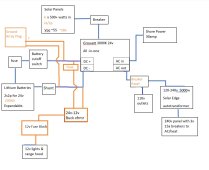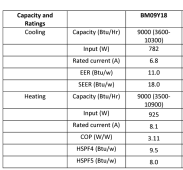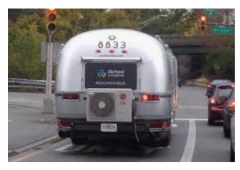OK all, I'm back and ready for more!

Those batteries are FLA, so even in best condition (which those are very much NOT) you're looking at 50% depth of discharge. A new battery box that you can stick a couple larger batteries in will buy you a LOT of stress relief. Even something like the
Harbor Freight Tongue Box will buy you a lot more room for batteries/fuses/wire. Good thing you've already planned to get different batteries, but it may well be a moot point.
Yeah
@smoothJoey , Kit (the manufacturer) didn't really keep up with the times, they shaved their sideburns off somewhere around the mid 90's.

That transformer isn't going to accomplish jack if it only puts out 12v of DC, your batteries are going to need 13.8v to charge your 12v batteries at the very least, more for LFP batteries and/or the bulk/absorption cycles that make acid batteries happy. I think that entire power system is going to be a complete loss save maybe the wiring for the 12v appliances.

For the 12v stuff, the best option is getting a beefy 24v-12v
buck converter and going 24v Battery -> Buck -> Fuse Block -> 12v Stuff. As Joey points out going back and forth from one voltage to the next and again and again is going to seriously nerf your efficiency..
So, in short:
Dump the old power panel and use the space for new DC fuse block, battery monitor, autotransformer, breaker box, etc.
Take the old batteries out of the loop completely and just use a buck transformer to get your 12v supply.
Find a way to get a 4th panel involved and stick with 2s2p strings, that's going to max out the PVInput on that Growatt (145v)
External jack that you can add in a ground mount array of 2s2p or 2s4p will help big time.
Get the most LFP battery you can afford/physically stick in the space involved.
OK, here's a revamped doodle of what we're all looking at so far by the sounds of things, my changes in orange:











